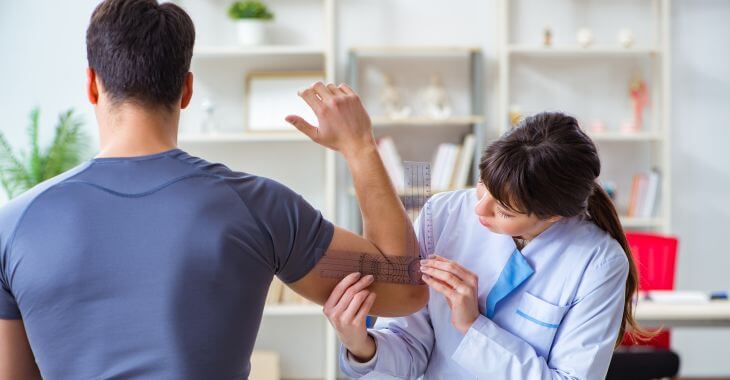Symptoms and Treatment of Planter Fasciitis
Do you have heel or foot pain that seems to come and go throughout the day? It is possible you might have planter fasciitis, a common orthopedic issue. The planter fascia is the ligament that connects the heel to the front of the foot. When it becomes inflamed or damaged from overuse or too much pressure, it can cause pain and discomfort that may require treatment to overcome. If you know the symptoms, you can seek treatment and get relief from your foot pain.
Symptoms of Planter Fasciitis
One of the main symptoms of planter fasciitis is heel pain or stiffness when you first put weight on your foot when getting out of bed in the morning. The pain may dissipate, then come back later in the day. Other symptoms of this type of ligament damage include:
- Stiffness in the bottom of the heel
- Pain when climbing stairs
- Pain when standing on your toes
- Pain from standing for long periods
Treating Planter Fasciitis
To get relief from planter fasciitis, the first recommendation will usually be rest and reduction of inflammation. Staying off your feet and using ice packs to reduce swelling can often help planter fasciitis heal, but it may not be enough. Physical therapy is one of the best options to recover from this foot condition and prevent further issues. Using specialized exercises, massage, muscle conditioning and other techniques, physical therapist can help strengthen the lower leg muscles for better balance and stretch the foot tendons to reduce pressure and inflammation.
If you have symptoms of planter fasciitis, seek medical care from a physician. They can offer home remedies and may suggest that you seek physical therapy to get relief from your condition.
Posted on behalf of:
Sovereign Rehabilitation
5555 Peachtree Dunwoody Road Northeast #225
Atlanta, GA 30342
(404) 835-3340
The information provided on this website, including text, graphics, images, and other materials, is intended solely for informational purposes and should not be used as a substitute for professional medical advice, diagnosis, or treatment.


)